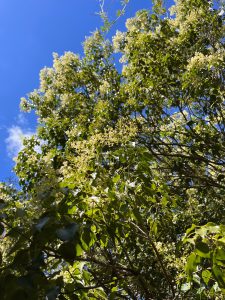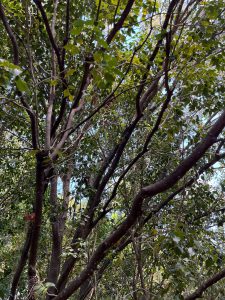Torchwood is a very unique and under-utilized native tree that occurs mostly in South Florida and the Florida Keys.
It also occurs in Mexico and the Caribbean. It can also grow on the East Coast of Florida to 9B, around St. Augustine.
Torchwood (Amyris elemifera), is the natural host plant of the Schaus Swallowtail, which has been on the endangered species list since 1976. It can also host the Giant Swallowtail, which is not endangered.
Torchwood was once prevalent in the Florida Keys but due to hurricanes and over-development, Torchwood is now a rare occurrence. Because butterflies rely on sometimes a single species of host plant, the Schaus Swallowtail continues to be endangered, so planting Torchwood helps them maintain their tenuous populations. It also provides nectar for other important pollinators.
Many reasons to plant Torchwood
This is only one of the reasons to plant Torchwood in your landscape. It also happens to be one of the most beautiful small trees in South Florida. It has small white flowers that grow in clusters, and are profusely fragrant, delicate, like the most expensive perfume. It fills the air, and even when you can’t see the flowers, you know it’s blooming. You can smell it even in the daytime, unlike many trees that are only fragrant at night. So, if you like to add a layer of fragrance to your garden, like I do, then you must have this tree! The leaves have a unique shiny leaf with a drip tip. They make the sweetest sound in the breeze.



Perfect for the urban landscape
Small in stature, rarely exceeding 15 feet, it tends to grow multi-trunked. It is named for the high resinous content of the wood, which was often used as torches for night fishing.
The birds love the fruit and will seek them out. It is also edible for humans. Although not a fast grower, like Lignum Vitae, it is well worth growing. Because of its slower growth habit, it will require much less maintenance, and never outgrow the average home garden.
A legacy tree
Check out the Association of Florida Native Nurseries (FANN) for sources of this valuable and beautiful tree, and many other hard to find Florida natives. More torchwood, please.
Source: UF/IFAS Pest Alert
Note: All images and contents are the property of UF/IFAS.



